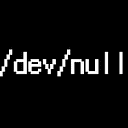Fortifying Your Digital Ramparts A Ransomware Defense Script to Turn Back Time
My only form of contact is https://www.linkedin.com/in/clumsy/
In the ever-evolving landscape of cybersecurity threats, ransomware stands out as a particularly insidious foe. Ransomware attacks encrypt your precious data, holding it hostage until a ransom is paid, often with no guarantee of recovery. As these digital extortionists become more cunning, the tools in our cybersecurity arsenal must adapt and evolve. Today, we spotlight an innovative defense mechanism — a script designed to safeguard your digital domain by cleverly manipulating system time, a concept we’ve dubbed “Temporal Shield.”
The Essence of Temporal Shield:
Our script, developed with precision, serves a dual purpose. Initially, it embarks on a journey back in time, specifically 30 days, adjusting the system’s clock to potentially disrupt the activation or operation of time-sensitive ransomware. Following this temporal adjustment, it delves into the heart of the Windows Registry, retrieving specific data as a means of monitoring and auditing potential ransomware activity or tampering.
How Temporal Shield Operates:
At its core, Temporal Shield utilizes Windows APIs to perform its duties. Here’s a simplified breakdown:
Time Travel: The script calculates the date 30 days prior to the current date. It then employs the SetSystemTime Windows API to adjust the system’s clock accordingly. This step requires administrative privileges due to its significant impact on system operations and security.
Registry Reconnaissance: Post time manipulation, the script accesses a predefined registry key (Software\Microsoft\Windows\CurrentVersion\Explorer). It queries the ShellState value, providing insights into system configurations that ransomware may exploit or alter.
The Strategy Behind Time Manipulation:
You might wonder, why manipulate time? Certain ransomware strains are programmed to activate or escalate their demands based on system time. By rolling back the clock, we aim to either prevent the ransomware from executing as intended or provide users and IT professionals with a crucial window for intervention and recovery.
Registry Reconnaissance Rationale:
The registry holds the pulse of Windows configurations and states. By monitoring specific keys and values, such as ShellState, we can detect anomalies that signal ransomware activity, allowing for timely countermeasures.
A Word of Caution:
While innovative, the Temporal Shield strategy is not without its caveats. Altering system time can disrupt legitimate applications and services. Thus, this script should be deployed judiciously, within a comprehensive cybersecurity framework, and preferably under the guidance of IT professionals.
Conclusion:
In the ceaseless battle against ransomware, Temporal Shield offers a novel approach by blending time manipulation with registry reconnaissance. While not a panacea, it exemplifies the creative strategies required to defend our digital frontiers against the ransomware scourge. As always, maintaining robust backups, practicing safe browsing habits, and staying abreast of the latest in cybersecurity measures remain your best defense.
Remember, in the realm of cybersecurity, innovation is our ally, vigilance our creed, and knowledge our shield. Stay protected, stay informed.
Below is the script
#include <windows.h>
#include <stdio.h>
#include <time.h>
// Function to subtract days from the current date and return the SYSTEMTIME structure
SYSTEMTIME SubtractDaysFromCurrentDate(int days) {
FILETIME ft;
ULARGE_INTEGER uli;
SYSTEMTIME st, newSt;
GetSystemTime(&st); // Get current system time
SystemTimeToFileTime(&st, &ft); // Convert SYSTEMTIME to FILETIME
uli.LowPart = ft.dwLowDateTime; // Populate ULARGE_INTEGER from FILETIME
uli.HighPart = ft.dwHighDateTime;
uli.QuadPart -= (ULONGLONG)days * 24 * 60 * 60 * 10000000; // Subtract days
ft.dwLowDateTime = uli.LowPart; // Update FILETIME
ft.dwHighDateTime = uli.HighPart;
FileTimeToSystemTime(&ft, &newSt); // Convert back to SYSTEMTIME
return newSt;
}
// Function to set system time back by 30 days
void SetTimeBack30Days() {
SYSTEMTIME st = SubtractDaysFromCurrentDate(30);
// Set the system time (Needs administrative privilege)
if (!SetSystemTime(&st)) {
printf("Failed to set system time. Please run as administrator.\n");
} else {
printf("System time set back by 30 days successfully.\n");
}
}
int main() {
HKEY hKey;
LONG result;
DWORD dataType;
DWORD data = 0;
DWORD dataSize = sizeof(data);
// Set system time back by 30 days
SetTimeBack30Days();
// Open a predefined key
result = RegOpenKeyEx(HKEY_CURRENT_USER, TEXT("Software\\Microsoft\\Windows\\CurrentVersion\\Explorer"), 0, KEY_READ, &hKey);
if (result == ERROR_SUCCESS) {
// Read a value from the opened key
result = RegQueryValueEx(hKey, TEXT("ShellState"), NULL, &dataType, (LPBYTE)&data, &dataSize);
if (result == ERROR_SUCCESS) {
printf("Value read successfully. Data: %lu\n", data);
} else {
printf("Failed to read value.\n");
}
// Close the key
RegCloseKey(hKey);
} else {
printf("Failed to open registry key.\n");
}
return 0;
}You can also contact me via telegram at t.me/SleepTheGod or Youtube.com/Stripped
